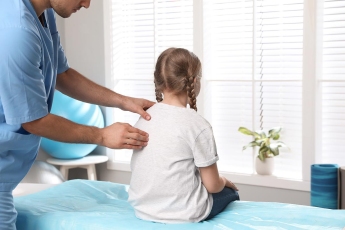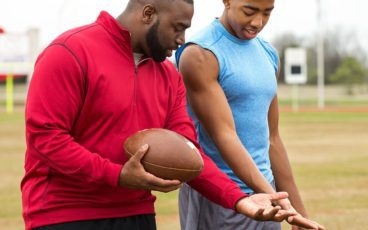The weightless feeling from a trampoline can be a thrilling experience. Children enjoy jumping on a trampoline and love to see how much height they can get with every jump. Although jumping on a trampoline is fun, it can be dangerous and cause injury.
Jumping on a trampoline poses a high risk of injury for children. Injuries that can result include sprains, fractures, and head and neck injuries. Andrea Kramer, MD, an orthopedic surgeon specializing in pediatric orthopedics at Illinois Bone & Joint Institute, sees a lot of trampoline injuries during the summer months. She says, “At least 10 a week and then in the winter all of these new indoor trampoline parks keep me busy. I see a combination of injuries from fractures to sprains.”
As children play and jump on trampolines, they are often trying to see who can jump the highest and perform stunts. Most injuries suffered on a trampoline are caused by kids bumping into each other, trying to do stunts, the rebound energy of the trampoline into the lower extremity, and falling off or falling onto the frame and springs of the trampoline.
Kramer adds, “Most of the injuries occur when more than one child is on the trampoline at a time and when a bigger kid is trying to bounce a little kid. Most do have netting around them, but kids still can go flying off. The injuries can occur from an awkward landing. Also, many of the indoor trampolines incorporate dodge balls while jumping,” which can increase the risk of injury.
Kramer says, “It is hard to set a safe age to jump on a trampoline. In fact, the American Academy of Pediatrics says that children under three years should not not jump on a regulation trampoline, but can use a mini-trampoline. Jumping is a great form of exercise, but these kids need to be careful. The injuries I see include all kinds of fractures. There is also the concern for head and neck injuries.”
For use of trampolines at home, make sure to:
Install safety nets and padding.
Cover the trampoline’s frame, springs and surrounding landing surfaces with protective pads. Make sure to check the quality of the equipment regularly.
Place at ground level.
A fall from a higher surface increases the risk of injury. Place it at ground level and away from surrounding trees and buildings.
Limit trampoline activity.
Younger children are more easily harmed by trampolines. Children under three years old should not use the trampoline. Only one person should be jumping at a time.
Supervise children at all times.
Always remove trampoline ladders after use to prevent unsupervised access by children. Don’t allow jumpers to do flips or somersaults.
If your child has sustained an injury from a trampoline or other outdoor activity, it may be best to see a specialist. For your orthopedic needs, you can visit one of IBJI’s OrthoAccess immediate care clinics for injuries that can’t wait. Download the free IBJI Access App–for iPhone and Android–for instant access to OrthoAccess locations and hours.
Andrea Kramer, MD, is a board-certified orthopedic surgeon specializing in pediatric orthopedics.

Andrea Kramer, MD, is a board-certified orthopedic surgeon, specializing in Pediatric Orthopedic Care, Pediatric Sports Medicine and Pediatric Neuromuscular Disorders.





